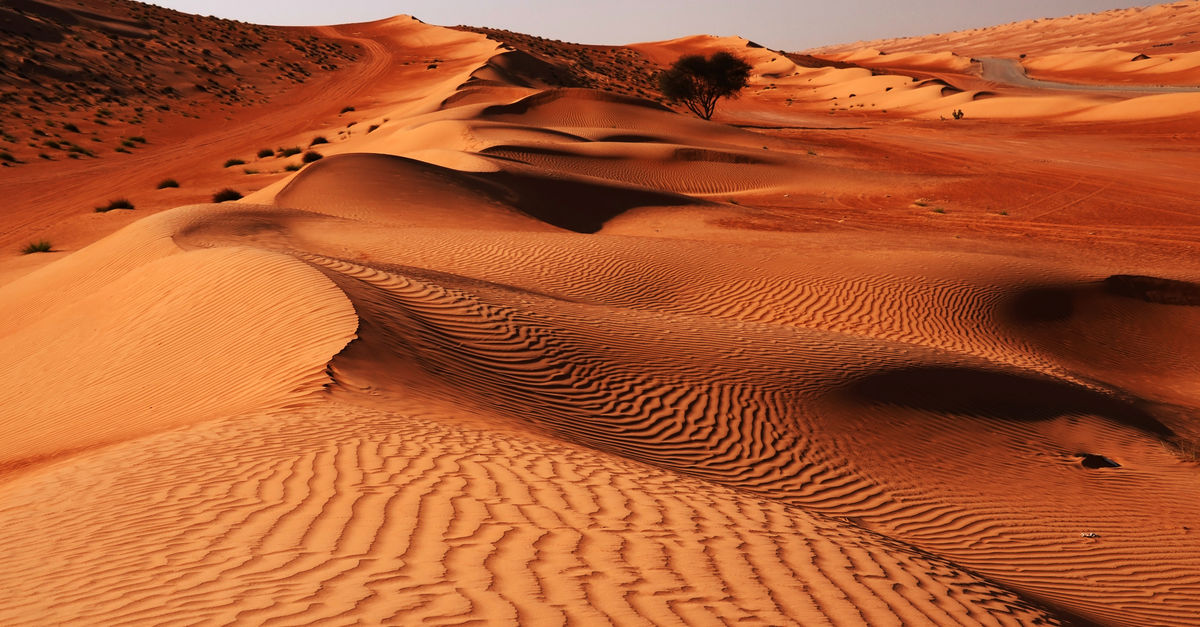



Wahiba Sands, also known as Sharqiya Sands, is a vast desert region in eastern Oman, renowned for its stunning, ever-shifting sand dunes, and is a popular destination for desert safaris and overnight stays in luxury camps.
Winter (November to March): The best time to visit Wahiba Sands, when temperatures are cooler (ranging from 20°C to 30°C), making it ideal for exploring the desert dunes, stargazing, and enjoying outdoor activities.
Summer (April to October): The temperatures can be extremely high (above 40°C), making it less comfortable for outdoor activities. If you do visit during the summer, it's best to do so in the early mornings or late afternoons when it's cooler.
By Car:
Wahiba Sands is about 200 km southeast of Muscat (approximately 3-4 hours by car). The best way to get there is by renting a 4x4 vehicle, as the roads leading to the desert are sandy and require off-road driving.
You can drive through Sohar, then take the Wadi Bani Khalid road to reach the edge of the desert.
By Tour:
Many tour companies in Muscat offer guided tours to Wahiba Sands, including transportation, which is ideal if you're unfamiliar with off-road driving.
A guided desert safari can also include activities like camel riding, dune bashing, and stargazing.
The Sand Dunes: Wahiba Sands is known for its vast, orange sand dunes that stretch over 180 km. These dunes are perfect for photography, dune bashing, and experiencing the thrill of sandboarding.
Bedouin Villages: Visit the traditional Bedouin tribes that live in the desert. These nomadic people still follow age-old customs, and you can learn about their way of life, their homes, and their culture.
Camel Riding: Riding camels across the dunes is a quintessential desert experience. Many camps offer guided camel rides, allowing you to explore the desert at a slower pace.
Wadi Bani Khalid: A beautiful oasis located near the desert, known for its clear pools of water surrounded by mountains and palm trees. It’s a perfect spot for swimming and picnicking.
Stargazing: With minimal light pollution, Wahiba Sands offers some of the best stargazing opportunities in Oman. You can enjoy the night sky while sitting on the dunes or from your desert camp.
Wahiba Sands Desert Camp: A luxury or traditional camp experience where you can enjoy a night under the stars. Some camps provide full-service amenities with comfortable beds and private tents, while others offer a more rustic experience.
Sandboarding and Dune Bashing: For thrill-seekers, the giant dunes are perfect for sandboarding or going on a 4x4 dune-bashing adventure with a local guide.
Dune Bashing: A thrilling off-road adventure where you ride a 4x4 vehicle over the sand dunes at high speed, navigating the steep slopes and valleys of the desert.
Camel Riding: Explore the desert in a traditional way by riding a camel across the dunes, enjoying the tranquility of the vast, empty landscape.
Sandboarding: Glide down the sand dunes on a board, similar to snowboarding but on the warm desert sands.
Stargazing: Spend the night under the stars, with little to no light pollution, making it ideal for seeing constellations and shooting stars.
Desert Safari: Take a guided tour into the heart of the desert, which can include a mix of dune bashing, camel rides, and visits to Bedouin camps.
Visit Wadi Bani Khalid: A nearby oasis where you can swim in the cool, clear water surrounded by rocky cliffs and palm trees.
Explore Bedouin Culture: Spend time with local Bedouin families, learning about their traditions, cuisine, and the way they survive in the harsh desert environment.
Photography: Wahiba Sands offers stunning opportunities for landscape photography, from the dramatic dunes to the golden sunsets and clear skies.
Luxury Desert Camps:
Desert Nights Camp: A luxury desert camp that offers a unique experience with spacious tents, air-conditioning, and a full-service restaurant. Enjoy traditional Omani hospitality, desert excursions, and stargazing.
Safari Desert Camp: An upscale camp providing comfort and luxury in the heart of the desert, including private bathrooms and excellent desert views.
Traditional Desert Camps:
Bedouin-style camps: These camps are designed to offer a more authentic, rustic experience. Tents typically have basic amenities and feature communal bathrooms.
Al Maha Camp: A more budget-friendly desert experience with traditional Omani tents and basic facilities.
Other Accommodations:
Wadi Bani Khalid Camp: A small, scenic campsite located near the oasis of Wadi Bani Khalid, offering basic amenities and easy access to the water.
Camping: For the adventurous, it is also possible to camp in Wahiba Sands with a permit or as part of a guided tour, allowing you to truly experience the wilderness.
Traditional Omani Cuisine:
Shuwa: Slow-cooked lamb that is traditionally prepared in an underground oven.
Mashuai: A dish of rice served with dried fish or meat.
Omani bread (Khubz): Freshly baked flatbread, often served with stews and meats.
Dates and Coffee: The Bedouins offer Arabic coffee (Qahwa) along with dates as a traditional welcome treat.
Dining at Desert Camps:
Most desert camps will offer buffet-style meals or traditional Omani dishes, often prepared with a mix of spices and served in communal settings. Fresh salads, grilled meats, and rice dishes are common.
Wadi Bani Khalid Oasis:
There are local eateries around the Wadi that serve simple Omani food, including fresh grilled meats and juices, often accompanied by traditional bread and dips.
Bedouin Hospitality: The Bedouin people are known for their warm hospitality. Visitors are often welcomed into their tents with traditional coffee and dates.
Dress Modestly: Omani culture is conservative, so modest dressing is expected, especially when visiting Bedouin families or local villages.
Arabic Language: Arabic is the main language spoken in the Wahiba Sands area, but many people working in tourism also speak English.
Respect for Traditions: Omanis take pride in their traditions, and visitors should respect local customs and cultures, including their hospitality, food practices, and desert lifestyle.
Religious Practices: Oman is a predominantly Muslim country, and visitors should be mindful of prayer times, particularly during Ramadan when many businesses and restaurants may have altered hours.